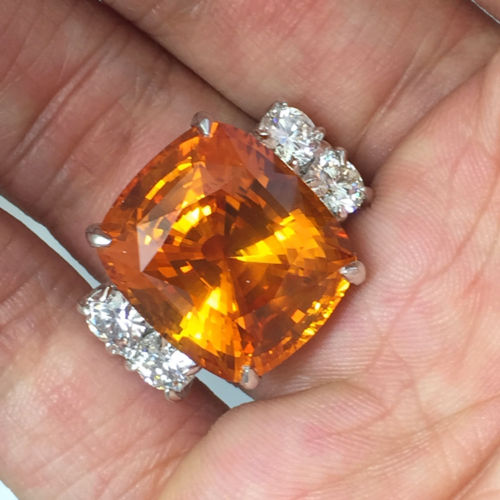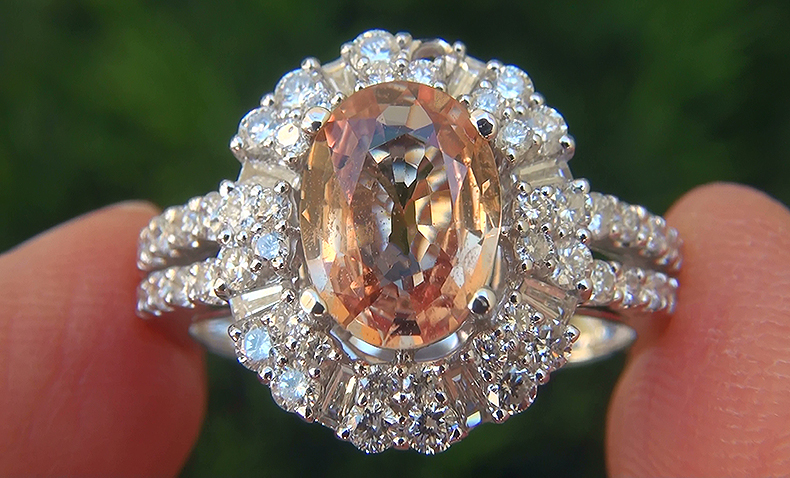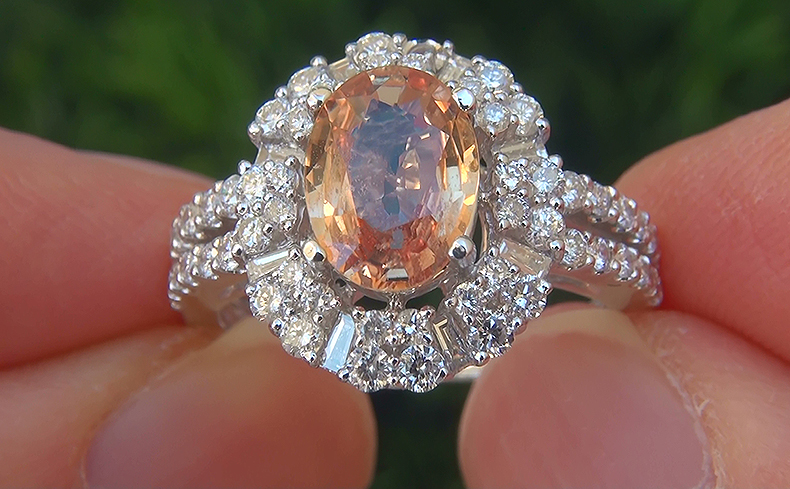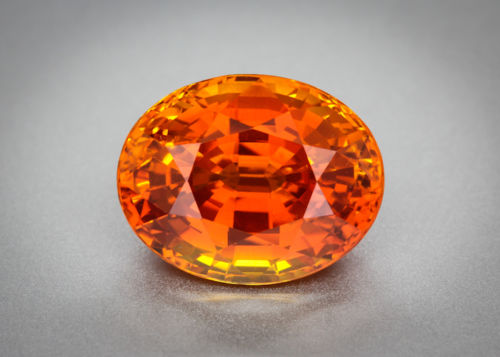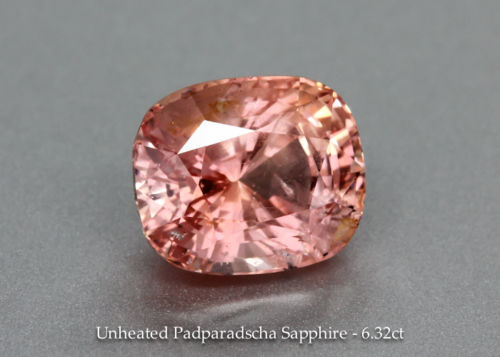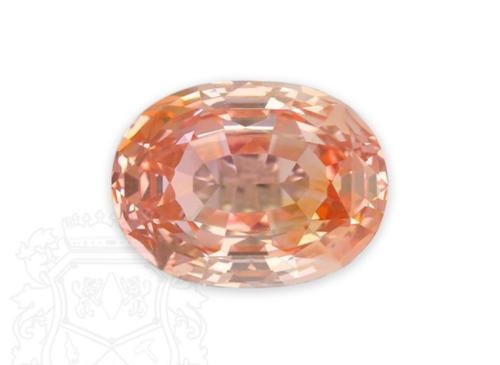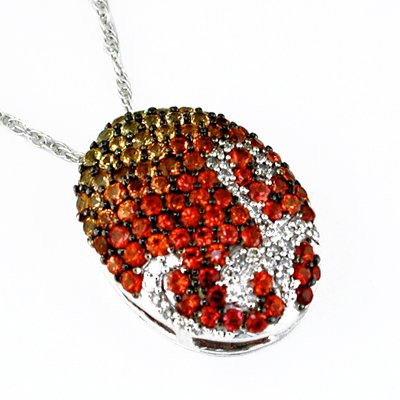The Gorgeous Orange Sapphire owes its color to the additional trace elements of chromium and iron in its formation, and ranges in hue from pale orange to a vivid reddish-orange, or a deep orange with brownish overtones. Though once considered an obscure and underestimated gem, it has recently gained in popularity for its rarity and beautiful fashion color. Orange Sapphires are not mined in great quantities, so even stones with slight to moderate inclusions are still valuable gems.
Some links on this website are eBay affiliate links.
“Extraordinary Vivid Orange Sapphire Gemstone” GIA Certified 2.67 Carat Sapphire and Diamond Engagement – Cocktail Ring.
This Jaw Dropping 1.70 Carat, near flawless VVS2 clarity orange sapphire exhibits the rare and highly sought after vivid yellowish orange color with a GIA Certification verifying it is a true “yellowish orange color” specimen. With an elegant top quality solid 18k white setting adorned with an impressive 64 near flawless to eye clean VS2-SI2 clarity F-G color accent diamonds….creating an elegant balance of character and beauty indicative of the workmanship of a true jewelry master craftsman. The setting has all of the earmarks of a true high end masterpiece featuring an elegant classic art deco design.
In antiquity, Diamonds and Rubies were divided by the Hindus into four castes, or classes, and being a Corundum of unique reddish hue, Padparadscha was called the Oriental Ruby, a Brahmin of the highest caste. The possession of a padmaraga, or Brahmin Ruby, conferred perfect safety upon the owner, and as long as he owned this precious stone he could dwell without fear in the midst of enenmies and was shielded from bad fortune. However, great care had to be taken to keep this Ruby of the first class from contact with inferior specimens, as its virtue would be contaminated and its power for good diminished accordingly.
Though many of the Sapphires were appropriated by other names and little is written concerning them, they were well-known and highly valued in the ancient world, used by the Etruscans over 2,500 years ago and prized in ancient Rome, Greece and Egypt. The term “Sapphire” with no color prefix attached to it refers to the Blue Sapphire and has an extensive history of legends and lore, much of which appears on our Blue Sapphire page. Other colors of Sapphire were called the same name as a popular gemstone of that color with the term “Oriental” added, thus the Oriental Amethyst was actually a Violet Sapphire, the Oriental Emerald was a Green Sapphire, and an Oriental Topaz was a Yellow Sapphire. Padparadscha was an Oriental Ruby, while Pink Sapphire was a Ruby that had not yet “ripened.” Others may simply have been mistaken for another mineral or were discovered too recently to have historical reference.
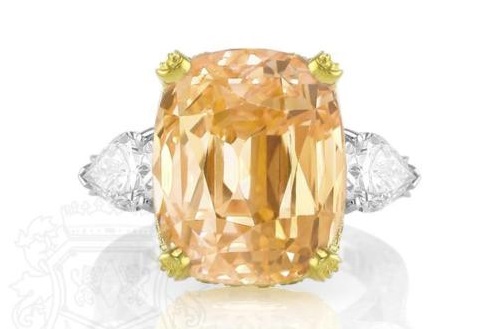
Padparadscha Sapphire, sometimes called Orange Sapphire, is a gem variety of Corundum with a unique salmon hue that ranges from a very pale pinkish-orange to a more vibrant orange with pink overtones. For decades collectors, dealers and gemologists have debated the issue of how pink or orange a stone in this category can be and whether some stones are too dark to qualify to be a Padparadscha. To date there is no agreeable standard for the color range. The name is derived from the Sanskrit/Sinhalese padma raga, meaning “Lotus color” and refers to the orange/pink color, similar to the Lotus flower. Natural Padparadscha is among the rarest and most highly prized varieties of Sapphire and has become a collector’s item, often bought as quickly as it is found.
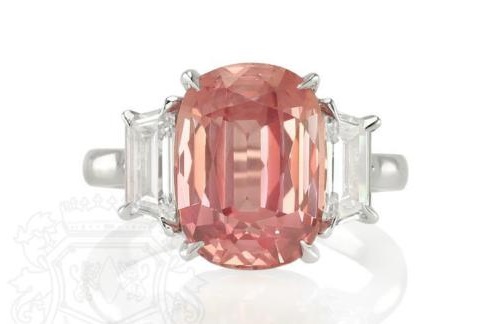
Rare Padparadscha and Orange Sapphire Gemstones
Padparadscha sapphire gemstones are the king of the fancy sapphire gemstone family. The orange-pink or pinkish-orange color of the Padparadscha sapphire is said to resemble the color of a lotus flower blossom. The exact color of a fine padparadscha sapphire is debatable among gem dealers and gemologists. What is not in debate is the beauty of a very fine quality padparadscha gemstone. For the purists, the only true source of the padparadscha is Sri Lanka.
